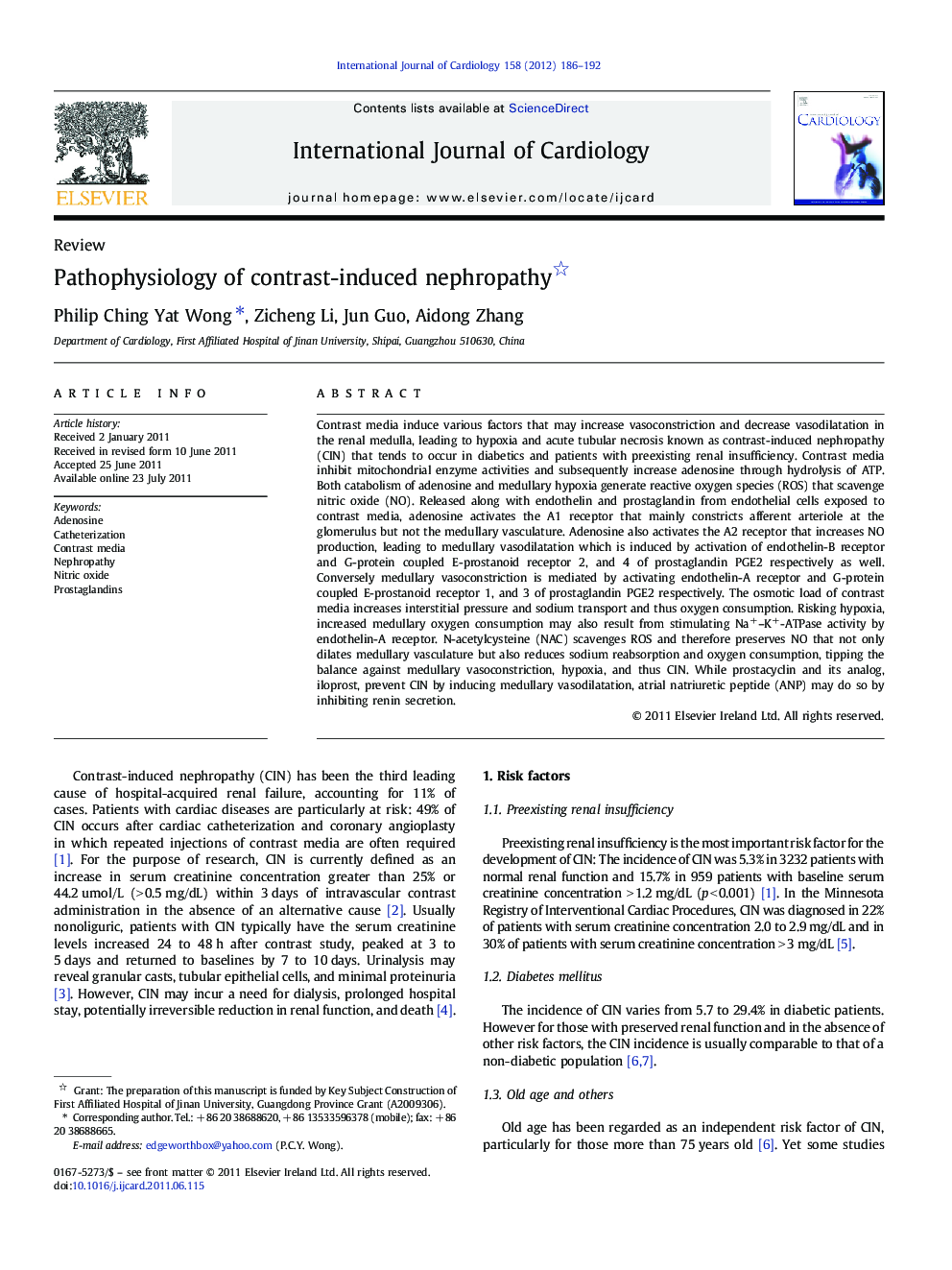| کد مقاله | کد نشریه | سال انتشار | مقاله انگلیسی | نسخه تمام متن |
|---|---|---|---|---|
| 2929929 | 1576245 | 2012 | 7 صفحه PDF | دانلود رایگان |

Contrast media induce various factors that may increase vasoconstriction and decrease vasodilatation in the renal medulla, leading to hypoxia and acute tubular necrosis known as contrast-induced nephropathy (CIN) that tends to occur in diabetics and patients with preexisting renal insufficiency. Contrast media inhibit mitochondrial enzyme activities and subsequently increase adenosine through hydrolysis of ATP. Both catabolism of adenosine and medullary hypoxia generate reactive oxygen species (ROS) that scavenge nitric oxide (NO). Released along with endothelin and prostaglandin from endothelial cells exposed to contrast media, adenosine activates the A1 receptor that mainly constricts afferent arteriole at the glomerulus but not the medullary vasculature. Adenosine also activates the A2 receptor that increases NO production, leading to medullary vasodilatation which is induced by activation of endothelin-B receptor and G-protein coupled E-prostanoid receptor 2, and 4 of prostaglandin PGE2 respectively as well. Conversely medullary vasoconstriction is mediated by activating endothelin-A receptor and G-protein coupled E-prostanoid receptor 1, and 3 of prostaglandin PGE2 respectively. The osmotic load of contrast media increases interstitial pressure and sodium transport and thus oxygen consumption. Risking hypoxia, increased medullary oxygen consumption may also result from stimulating Na+–K+-ATPase activity by endothelin-A receptor. N-acetylcysteine (NAC) scavenges ROS and therefore preserves NO that not only dilates medullary vasculature but also reduces sodium reabsorption and oxygen consumption, tipping the balance against medullary vasoconstriction, hypoxia, and thus CIN. While prostacyclin and its analog, iloprost, prevent CIN by inducing medullary vasodilatation, atrial natriuretic peptide (ANP) may do so by inhibiting renin secretion.
Journal: International Journal of Cardiology - Volume 158, Issue 2, 12 July 2012, Pages 186–192